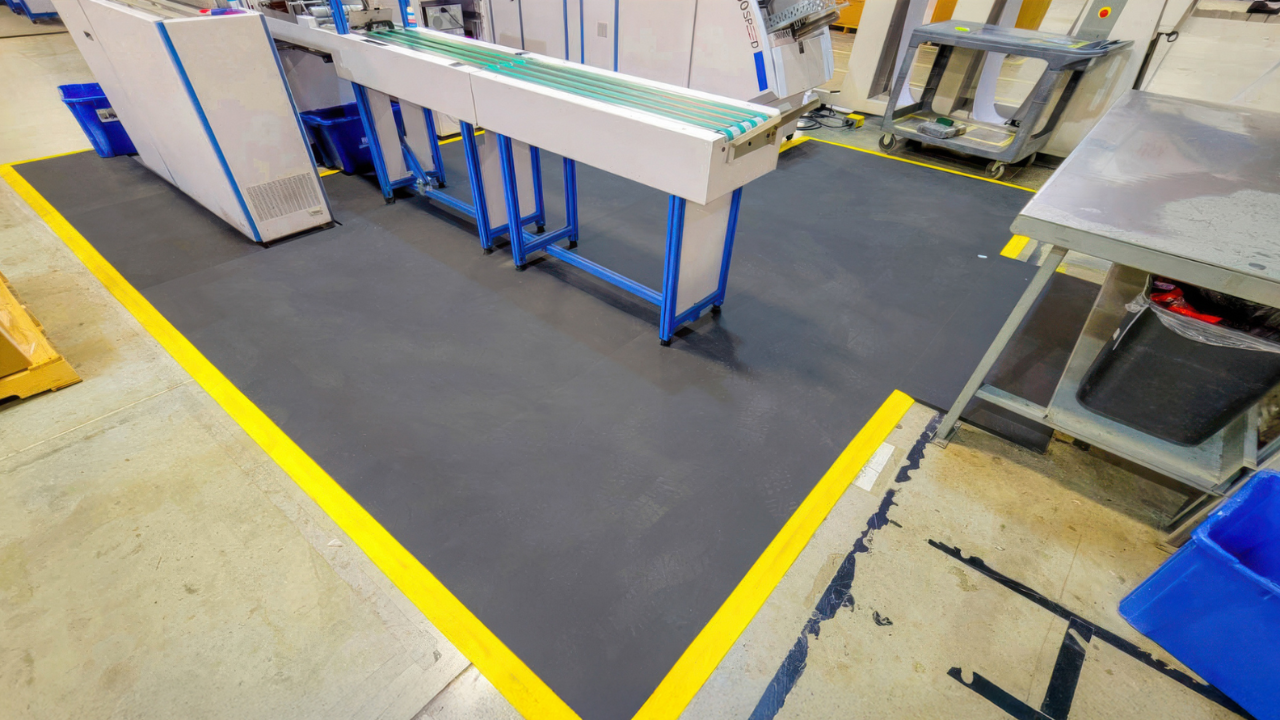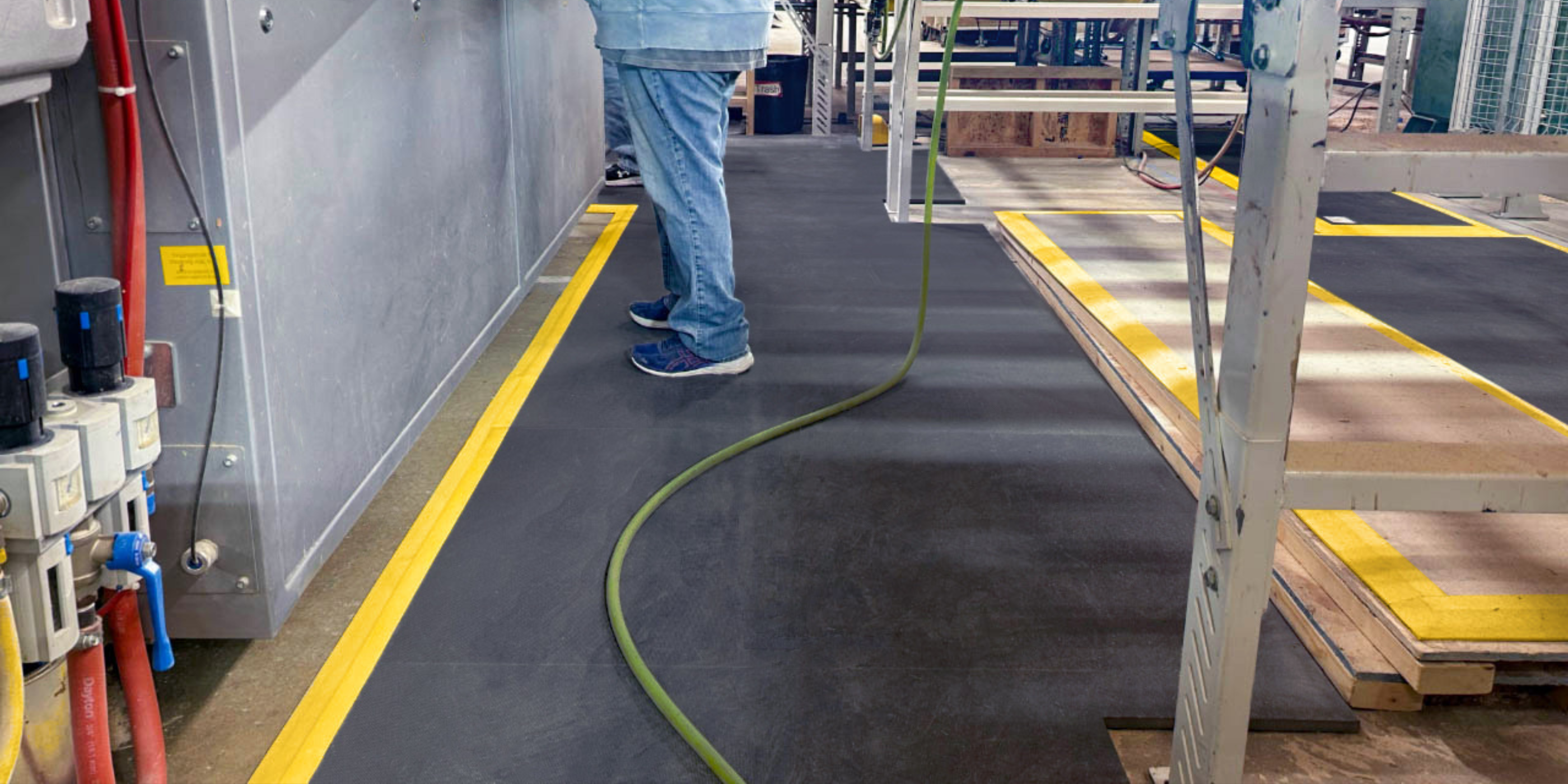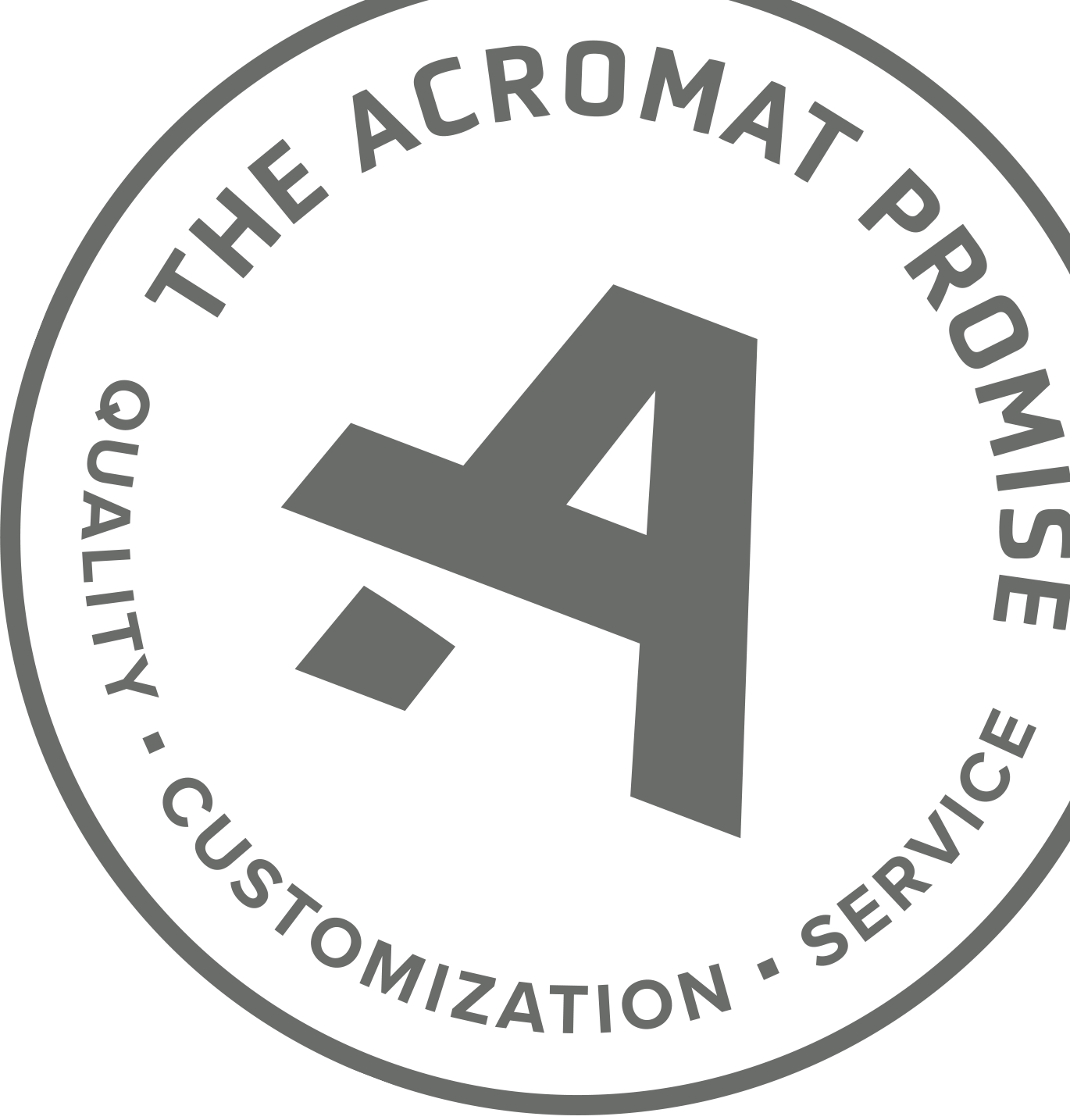Anti-fatigue mats are designed to achieve three things: help prevent slip, trip and fall hazards, provide traction, and offer ergonomic comfort for employees who stand long hours. Yet, if your mats are the wrong shape and size, or if you are piecing and piling them together, they may be worsening these issues rather than helping them.
Custom mats designed to seamlessly fit your workspaces are a proven solution.
Here are 5 ways custom anti-fatigue mats prevent workplace injuries:
1. Eliminates trip hazards from pieced-together mats
40% of safety and production leaders say “having to piece together rectangular mats” to cover complex layouts is one of their main challenges with anti-fatigue mats. Disconnected mats are ‘out on an island,’ making them more likely to slide, the gaps create trip hazards, and the collective group of pieces lead to inconsistent thicknesses, surfaces and life expectancies.
Below are 3 case studies showing the safety and health hazards manufacturing facilities faced as a result of pieced-together mats, followed by the benefits they experienced after custom-designing AcroMat anti-fatigue mats to fit.

TruStile Doors was hand-cutting rolls of mat and piecing them together within each workstation. An operator tripped over one of the gaps, rolled her ankle, and missed 12 days of work. According to the EHS Manager, replacing the pieced-together mats with custom mats for the entire facility cost less than this single injury.
 The Toro Company previously had 5 rectangular mats covering an area. After an employee tripped and broke his wrist on one of the overlapping borders, they designed a single custom mat to replace the 5 mats. 20-degree yellow borders highlight entry/exit points, the workspace has a consistent surface and traction, and the nitrile rubber reduces fall impacts by 70%.
The Toro Company previously had 5 rectangular mats covering an area. After an employee tripped and broke his wrist on one of the overlapping borders, they designed a single custom mat to replace the 5 mats. 20-degree yellow borders highlight entry/exit points, the workspace has a consistent surface and traction, and the nitrile rubber reduces fall impacts by 70%.
 Woodward Inc. replaced broken and flimsy tiles sliding around and creating slip hazards, and stacked mats creating ergonomic inconsistencies, with custom AcroMat anti-fatigue mats that created a single cushion, surface, and traction.
Woodward Inc. replaced broken and flimsy tiles sliding around and creating slip hazards, and stacked mats creating ergonomic inconsistencies, with custom AcroMat anti-fatigue mats that created a single cushion, surface, and traction.
The main reason many settle for a pieced-together approach is because they don’t realize customizing is an option. With AcroMat, you can design one-piece anti-fatigue mats to any size, shape, and features in minutes with our proprietary online mat builder, AcroSketch.
2. Eliminates slide-related injury risks
Over 20% safety and production leaders are dealing with anti-fatigue mats that slide around – a dangerous safety hazard. The average slip and fall injury costs $50,000 and leads to an average of 12 missed workdays, not to mention the impact on morale and trust.
Custom designing anti-fatigue mats to fit your workstations like a glove is one way to permanently eliminate slide-related injury risks. Simply stated, when the mat is designed precisely to fit, it's anchored by the equipment around it and has nowhere to slide.
Amanda Eskew, EHS Specialist with Nokian Tyres, shares how custom AcroMat mats combined with our non-slip coating, Grip-R, has made sure her mats “haven’t budged an inch” after two years in a 24/7 manufacturing facility.

Custom anti-fatigue mat designed for Nokian Tyres. The glove-like fit around the workstation's pillars prevents any risk of sliding; the mat is effectively anchored in place.
3. Increases spatial awareness
In addition to shape and size, customization gives you the ability to design the safety features you need into your anti-fatigue mats. For example, yellow safety borders to spotlight entry/exit points, built-in mat channels to seamlessly cover cords and cables, or different colors to spotlight elevation changes.

This industrial manufacturer designed yellow sections into their custom mats with AcroSketch to highlight elevation changes, improving spatial awareness.
In partnership with AcroMat, the industrial manufacturer above designed sections of yellow into their custom mats to highlight elevation changes over cable covers. Rather than simply laying black mats over top and hoping employees recognize the change in elevation (and don’t trip), they designed yellow sections into every area that has an elevation increase.
Now, employees are immediately aware an elevation change is coming. They know to tread lightly and can continue to focus on the work without fear over their next step.
Here are two additional examples of customizations that can help improve spatial awareness and an understanding of employees' surroundings:
A Target distribution center replaced taped-on safety markings, which were peeling off and fading, with custom-printed Lean 5S markings – improving durability and ensuring the safety messages were bright and clear for fast-moving employees.
4. Prevents edge-standing
Pure nitrile anti-fatigue mats – what we use to make our 100-1 Series, 100-Cleanroom Series, and 100-ESD Series mats here at AcroMat, have proven to reduce pain and discomfort by as much as 50% compared to hard surfaces. Yet, even the best mats will increase pain and discomfort if they’re the wrong size.
One common example of mats increasing pain and injury risk is edge-standing or half on/half off standing. When mats are too small and pieced together, or unable to be custom designed, users will often stand on the edge of the mat to do their jobs.
 “Standing with only half the foot in contact with the mat promotes a non-neutral ankle posture that would be similar to standing on high heels,” says Ergonomist Mike Janak.
“Standing with only half the foot in contact with the mat promotes a non-neutral ankle posture that would be similar to standing on high heels,” says Ergonomist Mike Janak.
We asked two ergonomists about the impact of edge-standing:
"Standing with half the foot in contact with the mat promotes a non-neutral ankle posture similar to standing on high heels," says Mike Janak, Certified Professional Ergonomist with ErgoFactor. "If the standing posture is static, and the worker stands at the edge of the mat for prolonged periods without moving, then the non-neutral ankle posture may result in musculoskeletal (MSD) injury."
"From a musculoskeletal perspective, this can increase tarsal/metatarsal joint issues – where the foot bones meet the toe bones at the ball of the foot," says Mary Plehal, Certified Professional Ergonomist and Owner of OptimaEHS.

Colder Product Company. Customization allows you to prevent edge-standing by designing your mats to slide under machinery and around table legs. Further, all AcroMat 100-Series mats are guaranteed to never curl along the borders, ensuring a seamless transition and eliminating a dangerous yet highly common trip hazard.
5. Prevents frequent on/off stepping
When anti-fatigue mats are too small or the wrong size, the result is constant on/off stepping. Similar to edge-standing, on/off stepping diminishes the anti-fatigue mat benefit.
"While stepping on/off might seem inconsequential, it can increase the risk of slips, trips and falls, even cuts, punctures and scrapes as employees move quickly across their work cells and stumble over the edges," adds Mary. "It can also contribute to ankle, knee or hip/low back fatigue if the on/off stepping occurs at a high frequency – say 50-100 times a shift."
The ability to custom design your mats to fit a complex layout prevents any risk of on/off stepping and, in turn, reduces the risk of related tripping and MSD injuries.
450 sq. ft. of uninterrupted traction and comfort. No on/off stepping, edge-standing, gaps or trip hazards. Operators can move fast without constantly worrying about their feet.
Summary: Fit, Never Force
When you're limited to rigid standard-size anti-fatigue mats, you're often stuck forcing them to fit into your layouts. Forcing leads to the hazards discussed above, such as gaps and trip hazards, edge-standing, on-off stepping and ergonomic inconsistencies.
With the ability to customize your ergo mats to any size, shape and features, you can make sure your mats seamlessly fit without compromise.
Workstations come in all shapes and sizes. To maximize ergonomic impact and prevent unnecessary slip, trip and fall hazards, your anti-fatigue mats should too.





